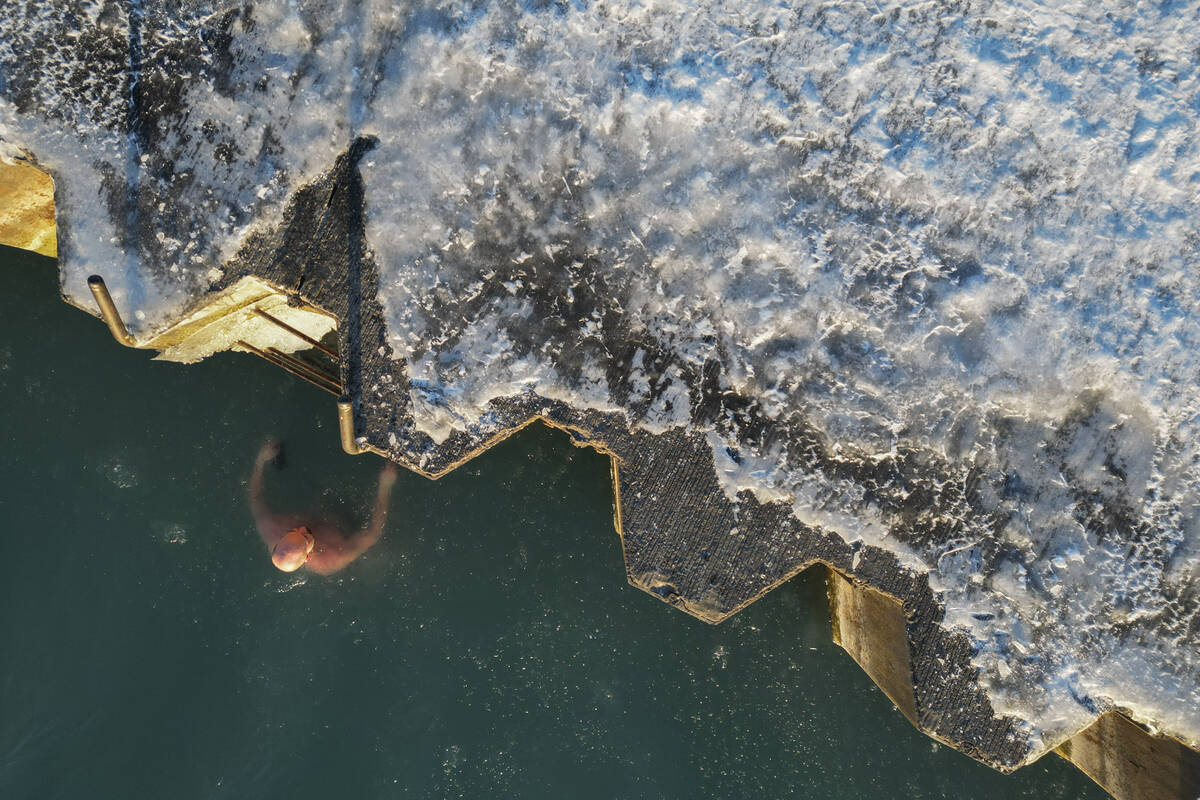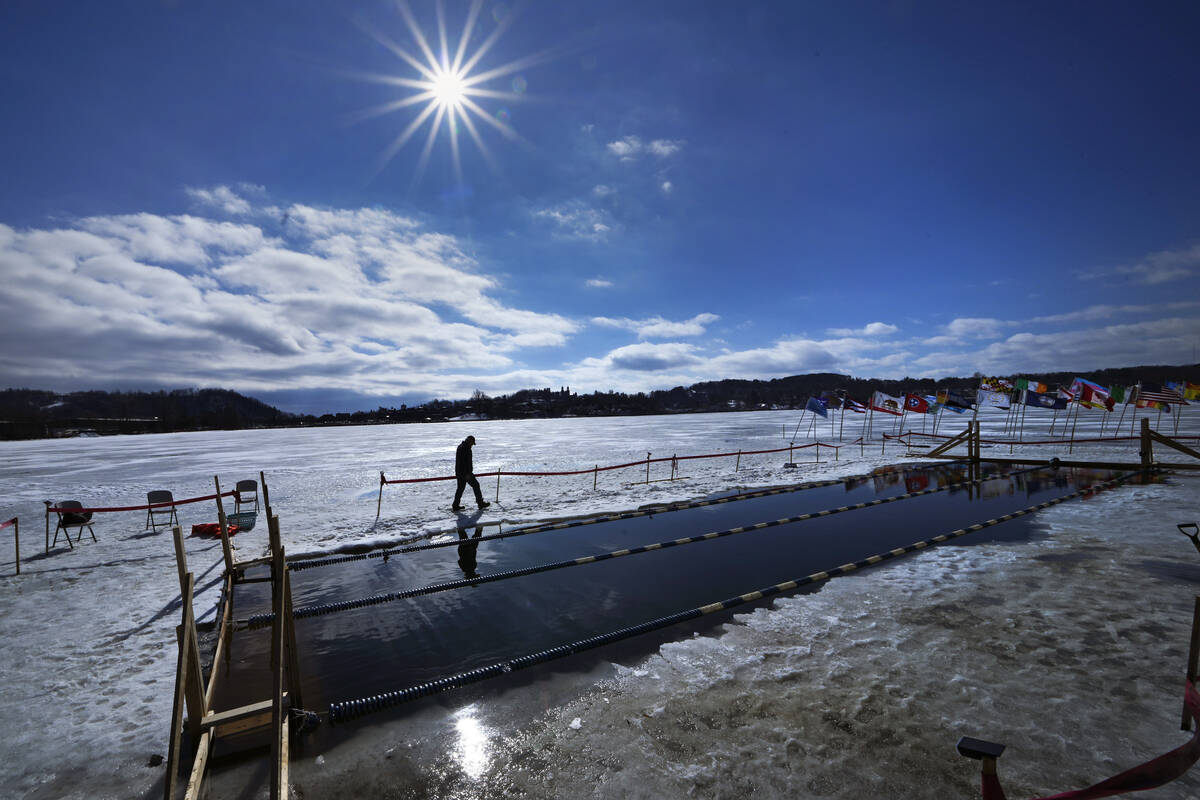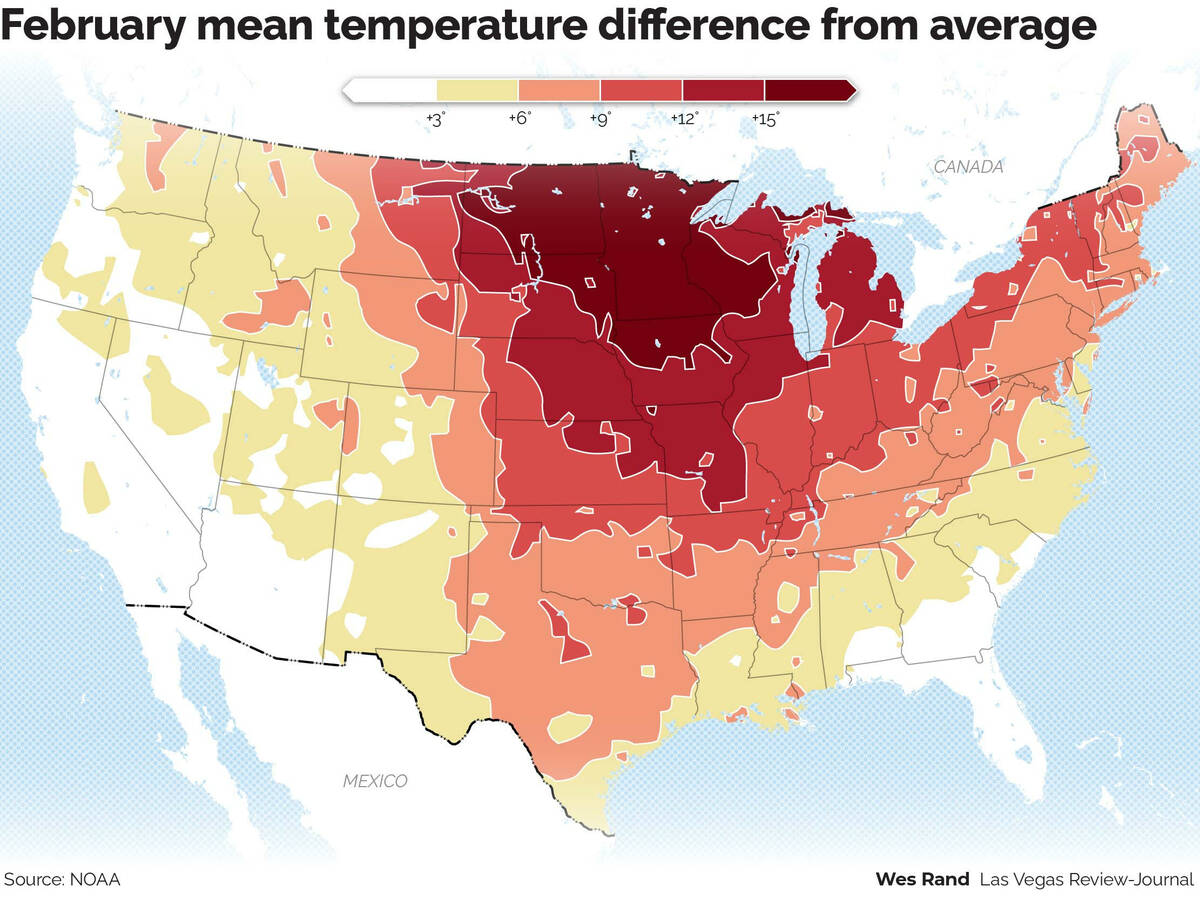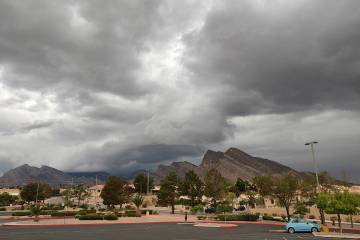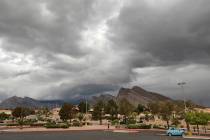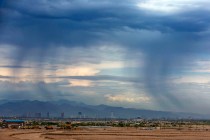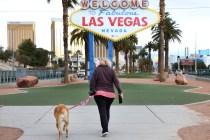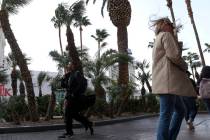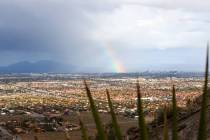Las Vegas bucking wide U.S. pattern of a winter without winter
Much of America is experiencing an absence of winter. Not exactly so in Las Vegas or the Southwest.
On Friday, the National Oceanic and Atmospheric Administration confirmed that this winter is the warmest in nearly 130 years of record-keeping for the United States. The Lower 48 states averaged 37.6 degrees, which is 5.4 degrees above average. The 2023–24 winter ranks as the warmest on record for the contiguous U.S. with eight states across the Upper Midwest, Great Lakes and Northeast each observing their warmest winter on record, says NOAA.
But Las Vegas, most of Nevada and the Southwest have joined the Southeast as sticking fairly close to normal temperatures this winter.
The winter started warm in Las Vegas, says National Weather Service meteorologist Chris Outler at the Las Vegas office, with December being 5 full degrees above normal.
However, January was only 0.4 of a degree above normal and February dropped to 0.8 degrees below normal.
“The country has had an El Nino for most of the winter,” Outler said, adding such a situation is a warm signal and temperatures above the norm are usually expected, especially in northern states.
Precipitation in Las Vegas has been below normal. Only 1.48 inches of rain has been recorded at Harry Reid International Airport, the official measuring station, from Oct. 1 to March 7 The normal for the five months is 2.57 inches.
January rainfall was 0.26 inches, about half of normal, while February rebounded to 0.95 of an inch, 0.15 of an inch above normal.
February precipitation for the contiguous U.S. was 1.86 inches, 0.27 inch below average, ranking in the driest third of the historical record. Precipitation was above average across much of the western U.S. and in parts of the central Appalachians, Southeast, and western High Plains.
Spring leaves arriving early
For a wide swath of the country from Colorado to New Jersey, and Texas to the Carolinas, spring leaves are arriving three to four weeks earlier than the 1991-2020 average, according to the National Phenology Network, which tracks the timing of plants, insects and other natural signs of the seasons.
“Long-term warming combined with El Nino conspired to make winter not show up in the U.S. this year,” said Yale Climate Connections meteorologist Jeff Masters, who co-founded the private firm Weather Underground. Masters said he was bitten by a mosquito in Michigan this year, which he called crazy.
This is just the latest in a drumbeat of broken temperature records, national and global, that scientists say is mostly from human-caused climate change from the burning of coal, oil and gas.
And it was the warmest U.S. winter by a wide margin. The past three months were 0.82 degrees warmer than the previous record set eight years ago, which “is a pretty good leap above the previous record,” said Karin Gleason, chief of monitoring at NOAA’s National Centers for Environmental Information.
Winter months without winter
Across much of America and especially in the normally chilly north, the country went through the winter months without, well, winter.
Last month was only the third-warmest February on record. But Iowa blew past its warmest February by 2 degrees, while parts of Minnesota were 20 degrees warmer than average for all of February, Gleason said.
On Feb. 11, Great Lakes ice cover hit a February record low of 2.7 percent.
A strong ridge of high pressure kept the eastern United States warm and dry, while California kept getting hit with atmospheric rivers, she said.
The European climate agency Copernicus earlier this week said it was the warmest winter globally, mostly due to climate change with an added boost from a natural El Nino, which alters weather worldwide and provides extra heat.
45 years of getting warmer earlier
In the past 45 years, winter has warmed faster in the United States than it has worldwide, with the Lower 48 states’ winters now averaging 2.2 degrees warmer than in 1980, according to an analysis of NOAA data by The Associated Press.
That’s probably because land warms faster than ocean with much of the United States as land and most of the globe as ocean, Gleason said.
While it is still getting warmer in the United States, since 2000 the rate of extra warming has slowed a bit, NOAA data shows. Winter weather expert Judah Cohen of Atmospheric Environmental Research, a commercial firm outside Boston, blames Arctic Amplification, which is how climate change has made the Arctic warm three to four times more than the rest of the globe and seems to shift weather patterns further south.
Arctic warming affects jet stream
As the Arctic warms faster, the jet stream — which moves weather systems across the Earth — wobbles and weakens. That means the cold air trapped at the top of the planet, called the polar vortex, escapes its normal confines and drifts elsewhere, bringing short plunges of frigid air that temporarily counteracts the overall warming trend in places, Cohen said.
That happened briefly in January when winter “just made a cameo appearance in the Lower 48,” Cohen said. But most of the time this year, when the polar vortex went wandering it hit Europe or Asia with bursts of icy air, not the United States, so there wasn’t an offsetting effect on winter American temperatures, he said.
Snow cover in the United States in February was the second lowest on record and third lowest in December, with only January above normal, according to the Rutgers Snow Lab.
Near Las Vegas, heavy snow in late February boosted the snow pack to above normal after a dry start to the winter.
Contact Marvin Clemons at mclemons@reviewjournal.com. Follow @VegasMarvRJ on X. The Associated Press reporters Seth Borenstein and Patrick Whittle contributed to this report.






